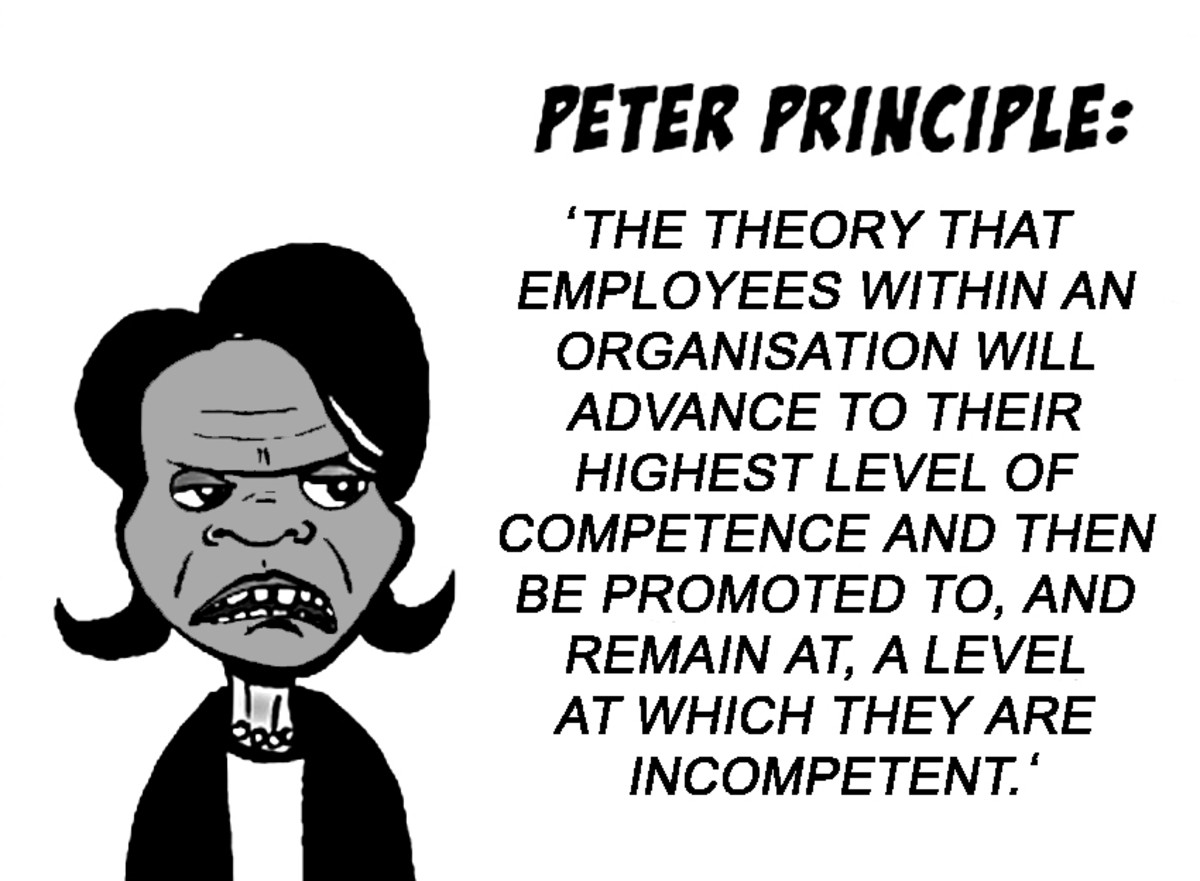Industrial/Organizational Psychology and the Benefit to Business
As an industrial/organizational psychologist (I/OP) my main concern is the productivity and effectiveness of the company’s employees. As a result a highly analytical approach is taken with regards to job analysis, employee training, performance evaluation and employee satisfaction, motivation and attitude. In addition to this worker stress, communication, group process, employee behavior, leadership, organizational structure and legal and ethical issues are evaluated with regards to their effect on the overall success of the business and the productivity of its workers. As many factors influence employee satisfaction and performance it is important for management to have a working understanding with regard to the intricacies of worker attitudes and relations. Throughout this presentation I will present these factors and ways in which to manage them for the benefit of the employee as well as the employer.
- Job Analysis
First we will look at the most fundamental aspect of any business, the employee. Every employer has the same goal; to find the most qualified candidate with the highest potential for productivity and longevity as possible. You may ask “How then can we as managers ensure that the candidate we select is the best fit for the job?” I will tell you there is no “fool-proof” method. However, there are several key areas in which through analysis and structure can be used to increase the potential for selecting a viable candidate. Although this process can be long and involved depending on the company’s needs it is essential to the success of both the employer and the potential incumbent. To begin this process an evaluation in detail with regards to the job description and specifications can be created highlighting the physical, educational and personality needs to effectively perform the job (Riggio E. R., 2008). To establish these credentials the use of interviews, observation, employee and employer surveys and archival data will be used in collaboration to pinpoint the criteria most likely to be associated with employee success. This data can then be assigned values to be applied in the form of a cut-off rating. This rating will allow for the separation of relevant applicants and non-relevant applicants. By establishing the relevance and importance of various job related criteria the likelihood of selecting a successful candidate based on specific predictors becomes significantly more prevalent. The result of this is that both employer and employee are better prepared to make a critical evaluation of the job in question with regards to whether there is a positive match for both parties. Once this criteria and its relevance has been established the intricate process of employee selection begins.
Employee Selection
The process of employee selection is simply put; the end all be all to the company’s and employee’s success. Without effective selection methods the likelihood of an employer hiring an employee that will not be successful and the likelihood that an applicant will accept a job they will not be successful in are much more likely and often result in wasted time and investment for both the employer and employee. In particular to this situation is the potential for drastic negative consequences. As reported in Management Research News employee turnover can cost up to 1/3rd of that employees annual salary and that expenditure is non-recoverable (Frankenfield G. & Kleiner H. B., 2000). My job as you’re I/OP will be to ensure that the process of employee selection is cost effective, viable and leads to the most desirable candidates for incumbency. It has been my experience that in addition to technical and educational skill sets the personality attributes of an individual also have a great impact on the ability for the individual to succeed at their given tasks. For example; it would not be advisable to hire an individual who exhibits introverted and passive personality traits as a sales person as they may have a difficult time building rapport, closing a sale and maintaining the relationship with the customer. Depending on the job description various personality characteristics may be more desirable than others, therefore personality tests will be included in the screening process. In addition to this I postulate that an on-the-job evaluation may be administered to the final candidate selection so as to give tangible credibility to their viability as an incumbent. This may also help refine the selection further as the ability of the potential incumbent to perform the job based on test scores and experience may not accurately represent their skills when actually performing the duties and responsibilities of the job. Based on these criteria the most potentially successful candidate can be presented. In turn this will also let the potential candidate explore their perceived viability for the job and thus is more likely to exhibit feelings of job satisfaction and subsequent consistent productivity that contributes to the potential longevity of that individual’s incumbency.
- Employee Training
Is integral as the selection of a viable candidate for a job is it is also essential to have effective, efficient and comprehensive training for that and other employees. As your potential I/OP it will be my goal to help create, implement and evaluate training programs representative of those standards. There are three major areas in which attention is required in the creation of effective training programs and their implementation. These areas are inclusive of ability of the training to be transferred to the work environment, the readiness of the trainee and the structure of the training. As reported by Ronald E. Riggio in Introduction to Industrial/Organizational Psychology, the structure of the training with regards to its frequency and style is particularly important in that it is the one element that is free from external influence such as the cognitive ability of the employee to transfer the training to their environment or the employees current skill level (Riggio E. R., 2008).
A solid training structure can be established by following specific steps. The first step in this process is the assessment of training needs. The purpose of this is to specifically define what is required to do the work in question. Next, assessing the training objectives allows for the creation of a structural outline for the training program that will not only help the administer communicating the data but also the employees ability to understand, follow, retain and apply the information presented. (Riggio E. R., 2008).It will also provide a foundation by which to evaluate the validity of the training program after its use. Yet before the training program is implemented the methods by which the training will be conducted must be evaluated for so as to ensure the highest benefit at the lowest cost. In addition to this the training program must be applicable to its participants in areas such as cognitive ability, skill proficiency and education. If the training is not mindful of these factors it may not be effective and waste the company’s resources as well as possibly create a situation in which the participant feels overwhelmed and loses confidence in their ability to do the job effectively.
Implementation of the training program for evaluative purposes is the next step in ensuring the cost to benefit ratio of the training program. There are four main areas in which focus will be given with regards to the program’s effectiveness. These areas are inclusive of reaction, learning, behavioral and result criteria (Riggio E. R., 2008). Reaction criteria will performed to measure the participant’s opinion of the program and its effectiveness by administration of a survey following completion of the training program. The learning criteria is an assessment of the amount of information retained by the participants. This data can be acquired using a correlated testing platform such as a quiz. Measurement of the behavioral criteria, inclusive of newly presented skills and/or increase in skills displayed by participant after training, gives the opportunity for hands on observational study allowing for immediate measurement of the program’s effectiveness. Lastly the criteria of results allows for the performance of a cost-benefit analysis to see if the program meets the needs of the company and employee exemplified by productivity vs. cost ratios. Plainly speaking the process of employee training is an effort to facilitate learning, transfer of job related behavior and training retention (Jund-Ming, W., & Brian H, K., 2004). This is established through pre and post evaluations.
Performance Evaluation
The specific evaluation model I would use as you’re I/OP is what is referred to as the 360° feedback model. This model takes information from supervisor, peer, subordinate, self and customer appraisal that can then be utilized to create rankings and comparison models. The evaluation of employee performance is not only to establish validity of the training model but also to let the employee know what is expected of them and to inform them when they are meeting, exceeding or falling short of the jobs requirements. Possession of this information by an employee will help reduce the prevalence for employee turnover resulting from poor performance that could have otherwise been corrected through proper assessment, training and communication. Some factors that are of import to the individual results of with regards to productivity and their evaluation scores are the level of employee satisfaction and motivation and their subsequent attitudes that arise as a result.
- Employee Satisfaction, Motivation, and Attitude
Employee satisfaction, motivation and attitude are the next areas of interest for me as your potential I/OP. Although this area of research and evaluation is filled with variables and different theoretical models it is important to understand the basic psychology of what motivates an employee. One obvious motivation is the meeting of needs. The basic need to provide for themselves and/or their families is a major motivator for most potential/current incumbents. However, there are more variables contributing to an individual’s motivation such as their perception of fair compensation, being able to give and receive feedback, level of autonomy, significance of job results, the level of skill; and ability required for the job and their ability to be witness to the results of their work (Riggio E. R., 2008). This is referred to as the job characteristics model. These criteria are representative of the three areas in which an employee will experience job satisfaction and subsequent motivation. Most methods for evaluating this process are self-report methods that leave a question to the accuracy of the results. However this data can also be compared with data retrieved regarding your employee’s absenteeism and frequency of disciplinary action, tardiness and productivity. The most effective way in which I as an I/OP can help increase job satisfaction and subsequent attitudes is the enrichment of the current job through added responsibility and allowing the employee to present feedback and have a voice in the job structural design and functionality. Yet simply creating a job environment rich with growth potential, feedback and autonomy does not alleviate the very real issue of worker stress that can have a considerable impact on their productivity regardless of their level of job satisfaction.
- Worker Stress
Worker stress is present on some level in any occupation. So as to avoid a negative impact on the productivity of the employee and subsequent financial impact on the business an understanding of the various stressors associated with the job must be evaluated. In addition to the level of work overload and/or underutilization worker stress can arise from feeling a lack of control in their environment, job ambiguity, physical stress, interpersonal stress as well as family related stress. All of this if mismanaged can have a negative impact on both the employer in that the employees absenteeism is likely to rise causing reduced functionality of the business and job burnout becomes likely for the employee. What I will do to ensure the effective management of these variables is to institute pre-employment personality screening to determine personality type and subsequent sensitivity to stress. Studies have shown that some certain personality traits are correlated with an individual’s ability to manage stress from various influences (Riggio E. R., 2008). One aspect in particular that employers can have a great influence over is the level of efficacy the employee feels. By ensuring that the employee is able to observe the validity of their work and the effect that it has with regards to the functionality of the business it is more likely that they will maintain a proactive attitude when faced with stress inducing factors. Just this one facet of the employee’s perception can be the difference between consistent achievement and job burnout. The result of the latter being an extreme cost to the business in the form of starting the evaluation, hiring and training process that can be extremely expensive and during this time the productivity of the business is reduced as the job responsibilities of the “burnt-out” individual are redistributed adding increased work and subsequent stress on the other workers. This can also increase the likelihood that an individual will be assigned a task or duty that they are less familiar with thus creating job ambiguity and subsequent dissatisfaction and increased stress for the employees still remaining. The cost to the individual can manifest not only financially but emotionally and physically as well. It is likely that the individual experiencing burnout has had it also affect his familial and extracurricular relationships as they are trying to compensate for the increased stress and work load. Thus far it seems a constant and risky battle attempting to hire train and maintain employees that only has theories and probabilities to help alleviate the likelihood of negative impact. However this is not the case when proper communication, cohesive group process and positively reinforced employee behavior are implemented as standard operation.
- Communication, Group Process, and Employee Behavior
In the work environment there are many influences that can have an effect on productivity through attitude, behavioral and perceptual mean. There are also many proactive methods by which to alleviate them. From my experience the most difficult to control is that of peer influence. People in groups tend to assimilate the popular or standard behavior regardless if it is in line with the employers expectations. Most employers do not advocate short cuts to increase productivity when it puts the customers continued business in question. Yet it is very likely that an employee will adopt the same behaviors and practices they observe in the work environment. This can be negative to the business as it increases the need and therefore cost of training. This can also be negative to the employee because these behaviors tend to go with them to future jobs (Sheppard A. J., (1993). The most effective way to combat this is trough effective communication, group process management and monitoring and maintenance of employee behavior. As you’re I/OP I will create a comprehensive and effective process of communication, methods of group process management with regards to productivity, cohesiveness and conflict and a positively reinforcing method of behavioral adjustment through incentive and reward programs. By creating incentives and rewards for individuals and groups it allows for the manager to either break up a group that may be suffering from a groupthink mentality in which decisions are being made hastily so as to maintain group cohesion or to bring a group together that has become despondent. As it has been evidenced that a balance between conflict and cohesion results in a more effective and productive group the implementations and maintenance of this would be very beneficial to the overall success and sustainability of the company and employee as well.
- Leadership and Organizational Structure
As with all teams, their success is dependent on their leaders. In business there are often many levels of management handling many different aspects of the business. However, regardless of their position the organizational structure and their leadership skills are the method by which all employees and the business itself survive and function. Without effective leadership and a strong organizational structure the likelihood of decisions resulting in a negative impact to the company being made is very strong. So what makes a strong leader you may ask? Studies have shown that most characteristics indicative of effective leadership can be placed in one of two categories. The first category is that of task –oriented behavior. This behavior is indicative of managing the work situation with regards to employee functionality, achievement of goals and problem solving. The second category is that of relationship-oriented behavior. This is the behaviors that show compassion, understanding and empathy to fellow employees. This is also how the leader is able to build rapport, maintain positive attitudes and help alleviate job dissatisfaction (Riggio E. R., 2008). To help facilitate these qualities interpersonal relationship training and basic psychology can become a part of the managerial training process. In addition to this training in the areas of monitoring employee performance, giving/receiving constructive feedback, flexibility, effective communication, decision making and mindfulness so as to be able to not only meet and facilitate the needs of the company but also the needs of the employee as well. This is especially effective as the needs of the employee and business can change frequently. By providing this training the leaders can become more adaptable and viable to their company and employ.
As the success of the employees is correlated with the effectiveness of their leadership so the success of the leadership is correlated with the effective organizational structure of the business. This structure is presented by two methodologies. The first is a traditional structure in which the structure is rule driven. This is an especially effective model for subordinate employees as it helps maintain consistency and clarity in expectations and procedures. However, the second type referred to as no-traditional structure may be more effective with upper management as it allows for creativity, adaptability and insightful influence from the incumbent leader. (Riggio E. R., 2008). In any business a balance between the two models is recommended. As you’re I/OP it will be my task to determine what that balance should be so as to benefit both the company and its constituents and provide a foundation by which the rest of the business can be successful.
That being said there is an area of growing concern as social change takes place. Many of these changes are evidenced by the passing of various legislation designed to protect workers’ rights with regards to fair compensation, consideration and opportunity. These legislative undertakings have facilitated the abolishment of discrimination based on age, gender or ethnicity, improved work safety with regards to their emotional and physical environment such as the institution of anti-harassment policies and the Whistle-Blowers Act as well as help alleviate the disparity between majority and minority employment ratios. Although these standards and policies can put additional strain on maintaining a cohesive, productive and cost effective work force due to additional stress on workers and employers and increased risk for financial impact, the result is a more satisfied and effective work force of individuals who are treated fairly and equally providing opportunity for any willing to strive for the achievement. As you’re I/OP I will work diligently to maintain a positive relations with the Equal Employment Opportunity Commission responsible for maintaining these nondiscriminatory standards to facilitate and maintain policies that promote the agency standards and reduce the prevalence of negative impact on individuals and their employers resulting from non-compliance (EEOC, 2013). This country is tagged as “the land of opportunity” and the service I propose to you is a highly analytical and methodological approach to providing that dream for not only the company and its shareholders but its employees as well. After all the success of a unit is contingent upon the quality of its parts
- Legal and Ethical Issue
In conclusion your decision to include an I/OP in your business construct will benefit both the employee’s and the employer as well in that the overall satisfaction, interaction and productivity and thus success of the business will become an area of specific focus and implementation so as to ensure that the processes from establishing the job description and specifications to training and management of the employee’s is done in the most cost effective and beneficial manner possible for the company.
References
EEOC, (2013). Overview, Equal Employment Opportunity Commission, eeoc.gov. Retrieved on May. 11th 2013 from http://www.eeoc.gov/eeoc/index.cfm
Frankenfield G. & Kleiner H. B., (2000). Effective Employment Screening Practices, Management Research News, Vol. 23, Issue 7/8. P.24
Jund-Ming, W., & Brian H, K. (2004). Effective employment screening practices. Management Research News, 27(4/5), 99-107
Riggio E. R. (2008). Job Satisfaction and Positive Employee Attitudes and Behaviors, Introduction to Industrial/Organizational Psychology, Pearson Education Inc. pp. 214-222
Riggio E. R., (2008). Job Analysis, Chapter 3, Introduction to Industrial/Organizational Psychology, Pearson Education Inc. p. 56 & 73
Riggio E. R., (2008). Employee Selection, Chapter 4, Introduction to Industrial/Organizational Psychology, Pearson Education Inc. p. 86, 87 & 118
Riggio E. R., (2008). Leadership, Chapter 12, Introduction too Industrial/Organizational Psychology, Pearson Education Inc. p. 343
Sheppard A. J., (1993). Productivity Loss in Performance Groups: A Motivation Analysis, Psychological Bulletin, American Psychological Association, Inc., Vol. 113, No. 1, p. 67- 81. Retrieved on May 4th 2013 from http://www.psych.ufl.edu/~shepperd/articles/Loafing%20PsychBull.pdf






